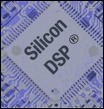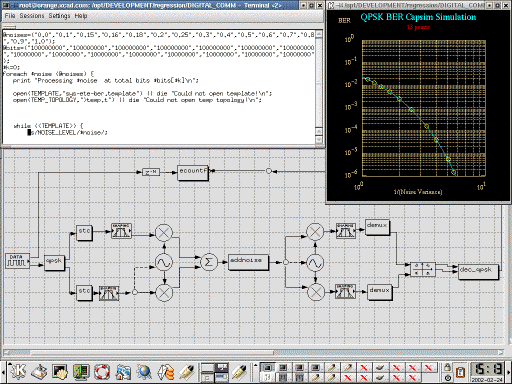 Silicon DSP Corporation
Silicon DSP Corporation
Communications | Digital Signal Processing (DSP ) | Radio Propagation k
 Silicon DSP Corporation
Silicon DSP CorporationCommunications | Digital Signal Processing (DSP ) | Radio Propagation k
As an example we provide a setup in which Capsim is used to simulate the Bit Error Rate (BER) performance of a digital communication link using QPSK modulation. A screen shot of the simulation is shown here . Using Perl as the scripting tool, we write a Perl script that changes the noise level and the number of bits to simulate and measure the BER. The Perl script sets up two lists. One for the noise levels and one for the number of bits to use for each noise level. Obviously it makes sense to use less bits when the noise level is high. This illustrates how any iterative simulation using a combination of parameters can be setup. The Perl script reads in a template topology, replaces the paramaters from each pair of elements in the list and generates a new temporary topology. The script then executes the temporary topology to produce results. The bit error estimation star appends each result to a file. So that after all simulations are complete a tabular result is generated. The BER results are shown here . |
 |
 Contact | ©1995-2018 Silicon DSP Corporation, All Rights Reserved
Contact | ©1995-2018 Silicon DSP Corporation, All Rights Reserved